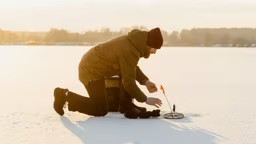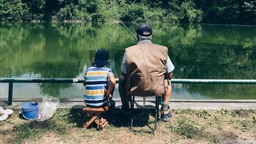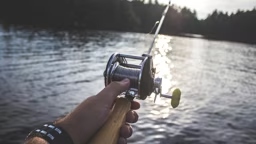
I like to take inventory of my boxes and make a list of what lures and terminal tackle I need to replace. Then, I head to local bait-and-tackle shops or boat shows to bargain shop at the sales that are typical this time of year.
How you stock your tackle box depends on what fish species you prefer to catch and the level of your fishing skills. No matter what your focus, giving your tackle box a thorough spring cleaning now means you won’t be distracted by digging for the perfect lure when the fish start biting.
See also The Right Water Temperature For Fishing
Adult Tackle Box
The best tackle-storage systems I’ve found for beginners and veterans alike are the soft-side bags that hold plastic utility boxes. The bags have plenty of pockets for carrying fish scents, pocket knives, small tools and other essentials. And the plastic boxes have dividers that let you separate lures into the various compartments.
The bags usually come with three or four plastic boxes; the neat thing is that you can buy extra boxes, which means you can swap out the three boxes you’ve filled with lures and terminal tackle for spring fishing with the other three boxes you’ve loaded with summertime baits. You can also set up boxes with tackle for various species, such as bass, walleye, trout or panfish.
Terminal Tackle
Hooks
If you’re fishing for multiple species, stock up on an array of hooks in different shapes; each will be ideal for a certain type of bait. Some essential hook styles: O’Shaughnessy (good for plastic worms), Aberdeen (for live minnows), straight-shank round bed (for plastic worms and soft plastic jerkbaits), circle (for live-bait catfishing and small soft-plastic grubs and worms), treble (for dough balls and prepared catfish and trout baits), and baitholder (best for live night crawlers, leeches and crickets).
Weights
To keep your bait below the water’s surface, it’s essential to add weights to your fishing line. Stock up on split shot, egg, bullet and bank sinkers in a variety of sizes.
Must-have miscellany
Keep snaps, swivels, beads, and rattles on hand for prepping your lures and line.
Child Tackle Box
A small hard-plastic tackle box with a couple of trays is best for a child’s tackle. Avoid giving kids lures with multiple hooks, such as crankbaits and jerkbaits. Using live bait is the best bet for kids to catch fish, so make sure their box is filled with baitholder hooks, long-shank cricket hooks and Aberdeen minnow hooks.
An ample supply of split shots is a must, along with plenty of bobbers that help keep the bait off the bottom and make it easier for kids to detect a strike when they see the fish pull the float below the surface.
Stocking up on scented artificials, such as Berkley Gulp products, comes in handy for times when live bait is unavailable.
See also How to Get Out on the Water and Love It
Lures
Jighead
You can use a jighead tipped with just about any kind of soft plastic to catch all sorts of fish, so make sure your box has several jigheads ranging from½ to 1 ounce in size. A skirted bass jig is the most effective lure for catching a big bass from your favorite lake.
Spinnerbaits
To trigger strikes from bass, pike, muskie and walleye, use spinnerbaits. Smaller versions also work on crappies and panfish, so make sure you have plenty of these blade baits in your box. A tandem-blade spinnerbait, such as the Strike King Premier Plus, is one of my favorites for catching bass, especially in the spring and fall.
Crankbaits
These plugs trick multiple species, so always include deep, mid-range and shallow divers in your tackle box. Check with your local bait-and-tackle store to find out the most productive colors for the waters you fish most often. A Rebel Wee-R crankbait has been productive for me, whether I’m fishing murky water for bass or clear water for walleye.
Jerkbaits
Your box should also contain some floating, suspending and sinking jerkbaits, such as the Original Rapala or the Smithwick Rattlin’ Rogue. I’ve caught a variety of species on these lures while twitching them in clear-water lakes and rivers throughout the country.
Plugs
Out of all the lures you stock, topwater plugs will provide the most fun. There’s nothing more exciting in fishing than watching a fish blow up on the surface to engulf your lure. Make sure you load your box with an array of chuggers and poppers, as well as walking-style and propeller baits. I love to watch the sashay of a Heddon Zara Spook walking across the surface and the suspense of waiting for a bass to explode on it.
Soft plastics
Complete your tackle box with an ample selection of soft plastics in natural colors, such as green pumpkin and watermelon, as well as some basic hues, such as white, yellow and chartreuse. Some of the most effective soft plastics for fishing nearly anywhere in the country include plastic worms, curly-tail and double-tail grubs, tube baits, swim baits and frogs.










